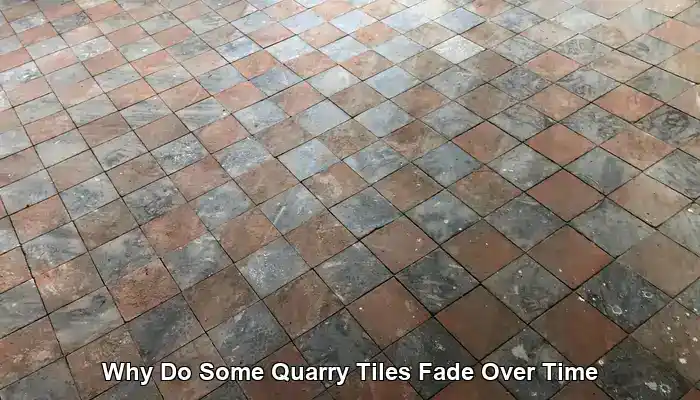
Quarry tiles are widely recognized for their exceptional durability, earthy aesthetic, and timeless appeal. These versatile tiles are perfect for various spaces, from a cozy kitchen to a vibrant patio, and are engineered to endure heavy foot traffic and challenging environmental conditions. Despite their strong reputation, numerous homeowners and property managers have noticed a gradual color fading over time, which can manifest unevenly or quite dramatically. This phenomenon can be confusing, particularly when tiles that were once rich in color—such as deep reds, warm browns, or robust terracotta shades—start to appear faded, splotchy, or dull.
The progressive fading of quarry tiles is not just a superficial issue; it often indicates deeper concerns such as wear and tear, environmental impacts, or potential chemical damage. Outdoors, these tiles are constantly bombarded by natural elements—such as rain, freezing temperatures, and fluctuating climates—that can gradually erode their surface. The freeze-thaw cycle, in particular, can lead to micro-cracks and surface flaking, exposing lighter inner layers that have a coarser texture. In contrast, indoor environments present a different but equally complex set of challenges. High foot traffic can slowly wear down the pigmented surface of the tile, revealing inner materials that often contain larger particles and varying mineral colors. This natural layering indicates that once the surface integrity is compromised, significant color and texture changes can follow.
In addition to physical deterioration, chemical exposure significantly contributes to the fading of quarry tiles. Aggressive cleaning products, particularly those that are acidic or alkaline, can weaken protective sealants and strip away essential coatings. Over time, this leaves the tile susceptible to staining, efflorescence (which refers to the formation of salt deposits that lighten the surface), and the buildup of dirt in any newly created pits or abrasions. Collectively, these factors lead to a faded, uneven appearance that detracts from the tile’s original charm and character.
Gaining a comprehensive understanding of the reasons behind quarry tile fading is a crucial first step toward preserving their character and extending their lifespan. This detailed guide will delve into the environmental, mechanical, and chemical aspects that contribute to fading—both indoors and outdoors—and offer actionable strategies for prevention and restoration. Whether you are maintaining a historical floor or simply looking to keep your tiles in excellent condition, this guide will provide you with the insights needed to navigate the nuances of quarry tile care.
Recommended Products for Daily Maintenance of Quarry Tiles
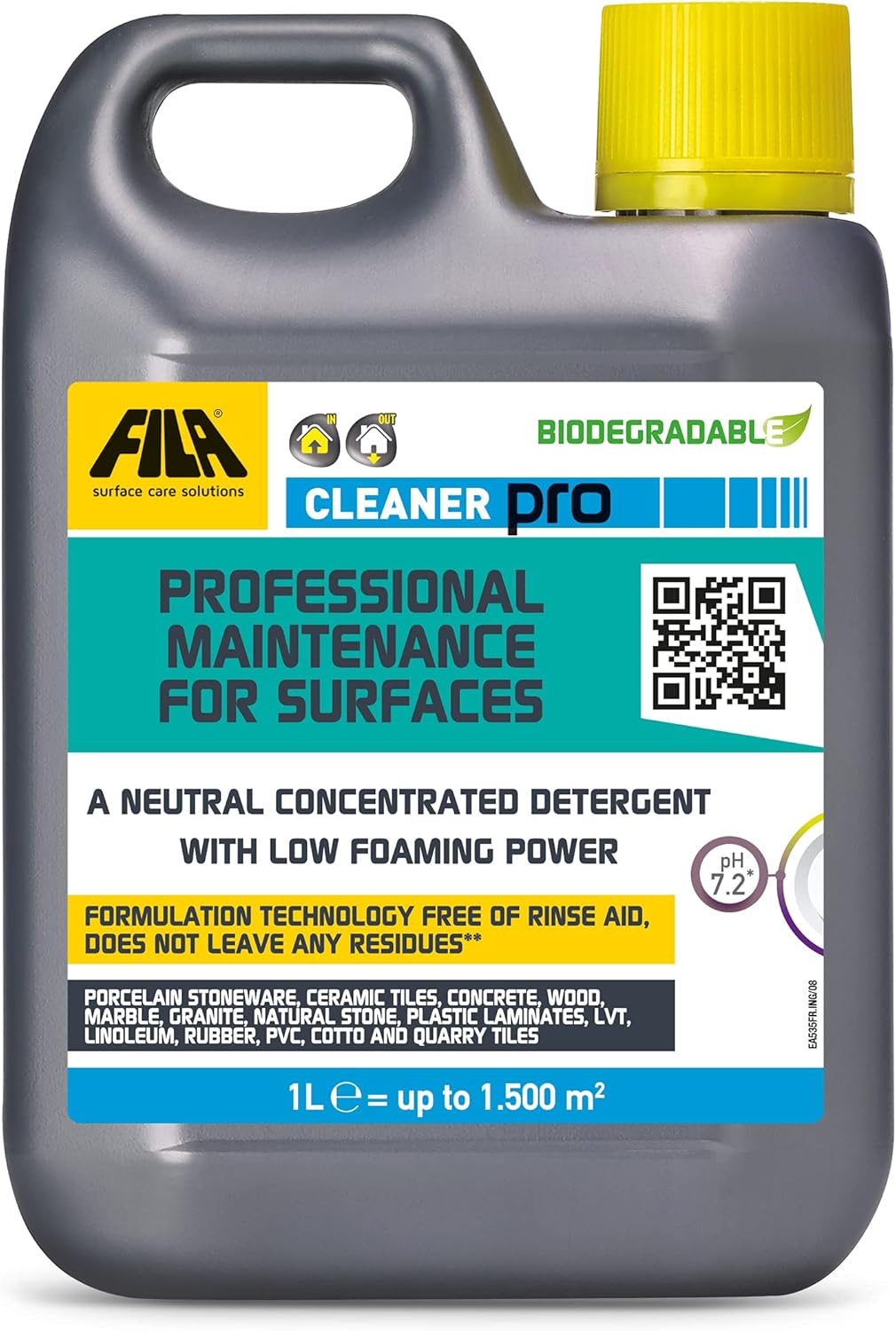
Fila Pro Floor Cleaner
|
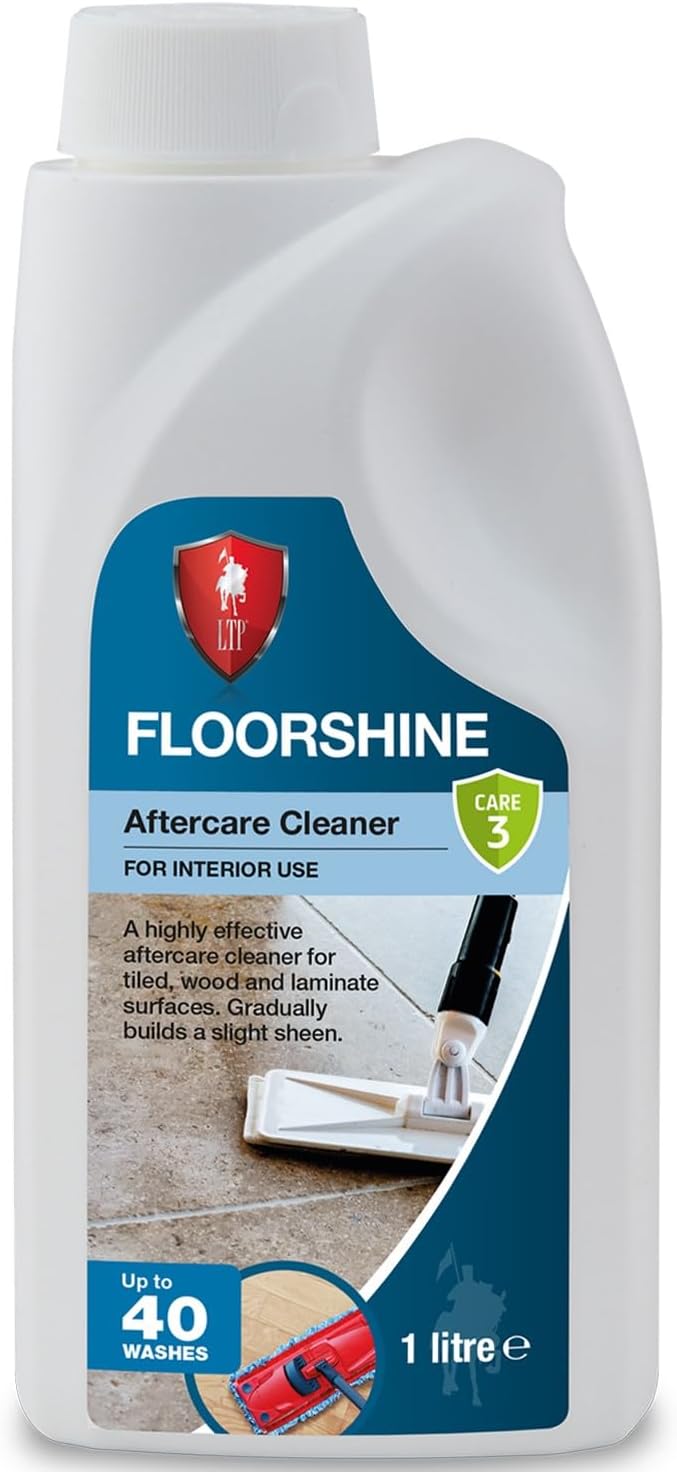
LTP Floorshine
|
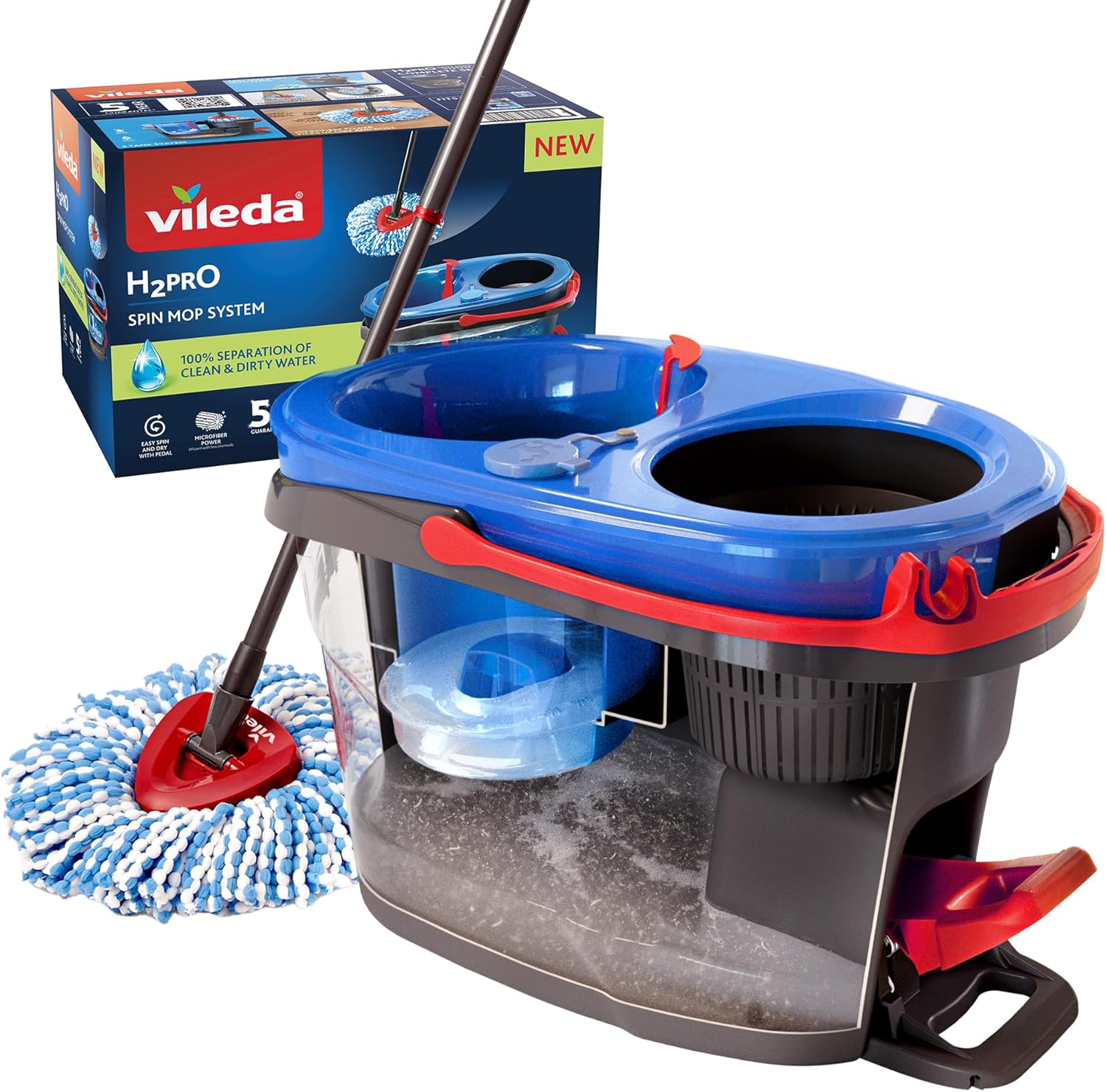
Vileda H2PrO Spin Mop System
|
Explore the Environmental Factors Leading to Fading in Quarry Tiles
Quarry tiles situated outdoors are constantly exposed to various environmental stressors that can gradually diminish their color and texture. Though these tiles are lauded for their toughness, the forces of nature have a unique capacity to erode even the most resilient surfaces over time.
Understanding the Impact of Weather on Quarry Tile Durability
One of the most significant contributors to color fading is exposure to weather, particularly from rain and the freeze-thaw cycles that accompany seasonal changes. When rainwater seeps into the porous surface of unsealed or poorly sealed tiles, it can carry minerals and contaminants that may stain or leach color from the tile. When temperatures plummet, moisture trapped inside the tile expands as it freezes, which can lead to micro-cracking and surface flaking. This consistent freeze-thaw action uncovers the tile’s inner body, often made of lighter, less pigmented materials, exacerbating the fading phenomenon.
Identifying Surface Wear and Layer Exposure in Quarry Tiles
Quarry tiles are generally designed with a dense outer layer that retains their most vibrant colors. As this protective crust begins to wear down—due to foot traffic, abrasion, or natural erosion—the inner layer becomes visible. This underlying layer typically contains larger aggregate particles and presents a more inconsistent hue, resulting in a patchy appearance that lacks the richness of the original surface. Consequently, this transition leads to a noticeable aesthetic shift, detracting from the initial charm and allure of the tiles.
The Effects of Chemical Damage from Outdoor Cleaning on Quarry Tiles
Cleaning outdoor tiles often necessitates the use of powerful chemicals to combat moss, algae, or dirt buildup. Unfortunately, these potent solutions can degrade sealers and strip away protective coatings over time. Once the sealant is compromised, the tile becomes increasingly susceptible to staining, mineral deposits, and rapid wear. This prolonged exposure to harsh chemicals contributes to fading and dull surfaces, further reducing the visual appeal of the tiles.
Discover the Indoor Challenges That Contribute to Quarry Tile Fading
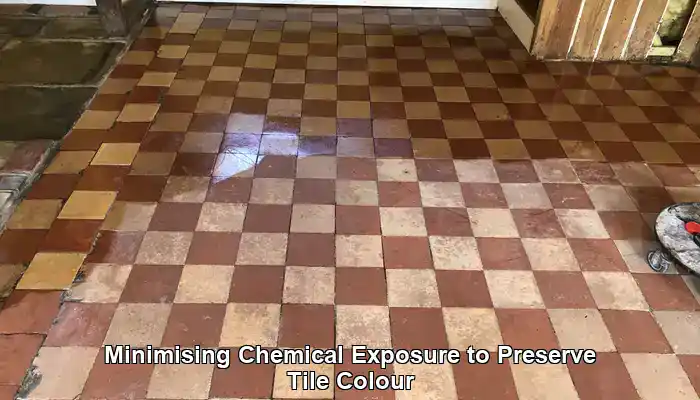
While outdoor quarry tiles contend with the elements, indoor tiles face a unique set of challenges that can also cause significant wear over time. From high foot traffic to various cleaning routines, the fading of indoor quarry tiles usually results from a slow, cumulative process driven by wear, surface degradation, and exposure to chemicals.
How Does Abrasive Wear and Crust Loss Impact Indoor Quarry Tiles?
Quarry tiles are designed with a dense, pigmented outer crust that provides their vibrant color and smooth finish. However, indoors—particularly in high-traffic areas such as kitchens, hallways, and commercial spaces—this outer layer gradually diminishes. As the surface wears away, the inner body of the tile is exposed, which typically consists of larger mineral particles and a more porous structure. This leads to a noticeable shift in color and texture; earth-toned tiles may begin to appear mottled or washed out, showcasing lighter patches where the crust has thinned.
What Are the Effects of Surface Pitting and Soil Accumulation on Tiles?
As the surface deteriorates, micro-abrasions and pits can form. These tiny indentations can trap soil, grease, and residues from cleaning products, resulting in uneven staining and dullness over time. Even routine cleaning might not fully eliminate embedded dirt, leading to a faded, blotchy appearance. This issue is particularly common in older floors that have not been properly sealed or maintained, making them more prone to fading.
How Do Efflorescence and Mineral Migration Affect Indoor Quarry Tiles?
Efflorescence is another significant factor contributing to the fading of indoor tiles. This occurs when moisture beneath the tile migrates upward, carrying soluble salts to the surface. As the moisture evaporates, it leaves behind a white, powdery residue that lightens the tile’s appearance and can potentially damage the surface. Efflorescence is especially prevalent in areas lacking adequate subfloor ventilation or where tiles are installed over damp concrete. If left unaddressed, it can deteriorate the tile’s surface and complicate cleaning efforts.
What Are the Consequences of Chemical Overuse and Sealer Breakdown?
Indoor cleaning practices often rely on strong chemical agents, particularly in commercial or food preparation environments. While these products effectively remove grease and stains, they also risk stripping away sealers and protective coatings. Once the sealer is compromised, the tile becomes increasingly porous and vulnerable to staining, wear, and further fading. Moreover, acidic or alkaline cleaners can even etch the surface, permanently altering its texture and color. Over time, repeated exposure to harsh chemicals accelerates the degradation of both the tile and its finish.
How Can Proper Maintenance Practices Enhance the Longevity of Quarry Tiles?
To prevent the fading of indoor quarry tiles, careful maintenance is essential. Utilizing pH-neutral cleaners, adhering to a regular sealing schedule, and avoiding abrasive tools can greatly extend the life and visual appeal of the tiles. For older floors showing signs of wear, professional restoration services—including deep cleaning, resealing, and color enhancement—can help revitalize their original beauty and vibrancy.
Implementing Effective Prevention and Restoration Techniques for Quarry Tiles
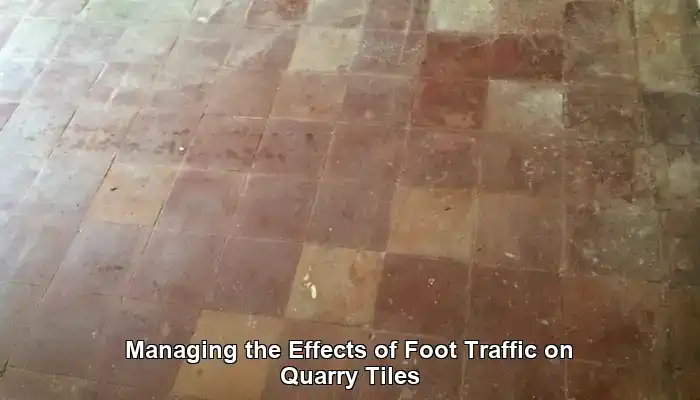
Understanding the causes of fading in quarry tiles is just the beginning; the real value lies in knowing how to prevent fading and restore their original charm when wear occurs. Whether your tiles are placed indoors or outdoors, proactive care and thoughtful restoration can significantly extend their lifespan while maintaining their rich, earthy character.
How Does Sealing Act as the First Line of Defense Against Fading?
One of the most effective methods for preventing fading is through appropriate sealing. Quarry tiles are inherently porous, and without a protective barrier, they can easily absorb moisture, dirt, and chemicals. A high-quality penetrating sealer fills the pores without forming a surface film, allowing the tile to breathe while repelling contaminants. This is particularly critical for outdoor tiles to shield them from rain, frost, and algae growth. Indoors, sealing is essential to resist staining from spills, cleaning agents, and foot traffic.
Sealers should be reapplied periodically—typically every 1 to 3 years, depending on usage and exposure levels. A simple water-drop test can help determine when resealing is necessary: if water soaks into the tile instead of beading on the surface, it’s time for a refresh.
How Can Intelligent Cleaning with the Right Products Benefit Quarry Tiles?
Routine cleaning plays a crucial role, but the cleaning agents selected have a significant impact on the tile’s longevity. Harsh chemicals, especially those that are acidic or alkaline, can degrade sealers and etch the tile surface. Over time, this can lead to dullness, discoloration, and increased susceptibility to staining. Instead, choose pH-neutral cleaners specifically designed for stone or tile surfaces. These products effectively lift dirt without compromising the integrity of the tile.
For stubborn grime or efflorescence, use targeted treatments sparingly and always follow with a thorough rinse. Avoid bleach, ammonia, and vinegar-based solutions, which might seem effective but can cause long-term damage.
What Maintenance Techniques Can Safeguard the Color Integrity of Quarry Tiles?
Regular sweeping and damp mopping are vital practices that help prevent soil accumulation and surface abrasion. Opt for soft-bristle brushes or microfiber pads instead of abrasive scrubbers that could wear down the tile’s pigmented crust. In high-traffic areas, it’s advisable to use rugs or mats to minimize direct wear—especially near entryways or kitchen areas.
For outdoor tiles, pressure washing should be approached with caution. While it can efficiently remove surface dirt, excessive pressure may damage the tile or force water into cracks, exacerbating freeze-thaw damage. If pressure washing is necessary, maintain low pressure and keep the nozzle at a safe distance from the tile surface.
How Can Professional Restoration Revitalize Worn Quarry Tiles?
When fading becomes apparent and routine care is insufficient, professional restoration can achieve remarkable results. Restoration specialists employ a combination of deep cleaning, mechanical resurfacing, and color enhancement techniques to bring life back to worn tiles.
- Deep cleaning effectively eradicates embedded dirt, grease, and mineral deposits using specialized equipment and solutions.
- Mechanical honing or polishing smooths worn surfaces and restores texture, particularly for indoor tiles that show signs of surface pitting.
- Color enhancement sealers can deepen faded tones, especially in earth-toned tiles, enriching their natural pigments without creating a glossy finish.
In cases of substantial wear, restoration may also necessitate regrouting, tile replacement, or the application of protective coatings tailored to the tile’s specific environment.
What Long-Term Care Strategy Should Be Developed for Quarry Tiles?
Preventing future fading involves establishing a long-term care strategy. Create a maintenance schedule that includes regular inspections, cleaning, and resealing. Educate household members or staff about proper cleaning practices and the significance of using appropriate products. In commercial settings, consider partnering with a floor care professional to formulate a customized plan based on traffic levels and environmental conditions.
If your tiles are part of a heritage property or possess historical significance, consult with conservation experts before initiating any restoration efforts. Preserving the authenticity of older quarry tiles may require specialized techniques and materials to maintain their structural integrity.
Addressing Frequently Asked Questions About Quarry Tile Care
Can Faded Quarry Tiles Be Successfully Restored?
Yes, quarry tiles can often be restored through deep cleaning, resealing, or even professional refinishing techniques, depending on the severity of the fading. Homeowners should investigate various methods for rejuvenating their tiles and reinstating their original vibrancy.
What Is the Suggested Cleaning Frequency for Quarry Tiles?
Regular sweeping should be performed weekly, with more thorough cleaning every few months to maintain their appearance and prevent fading. Establishing a consistent cleaning routine will aid in preserving their vibrancy and overall condition.
Are There Specific Sealants Tailored for Quarry Tiles?
Indeed, there are specialized sealants formulated specifically for quarry tiles that provide protection against moisture and UV rays, thereby enhancing their longevity and aesthetic appeal. Homeowners should consult professionals for personalized recommendations regarding sealant selection.
Which Cleaning Products Should Be Avoided on Quarry Tiles?
Avoid using acidic cleaners, harsh chemicals, and abrasive scrubbers, as these can damage the tile’s surface and contribute to fading. Instead, choose gentle, tile-safe cleaning products that maintain the integrity of the surface.
How Can I Determine If My Quarry Tiles Need Resealing?
If water fails to bead on the surface or if the tiles appear dull and stained, it may be time to reseal them. Regular inspections can ensure optimal protection and appearance.
Does Indoor Lighting Influence the Fading of Tiles?
Indirect indoor lighting generally has a lesser impact than UV rays, but extended exposure to bright light can contribute to gradual fading. Homeowners should consider their lighting options when designing their spaces to minimize potential fading.
Is It Safe to Use a Steam Cleaner on Quarry Tiles?
Steam cleaners may be too harsh for quarry tiles and could potentially damage their surface. It’s advisable to adhere to recommended cleaning methods to maintain the integrity and appearance of the tiles.
Are Certain Quarry Tiles More Prone to Fading Than Others?
Yes, tiles made from lower-quality materials or pigments may fade more quickly compared to those crafted from higher-quality materials. Homeowners should prioritize quality when selecting tiles to ensure longevity and resistance to fading.
Does High Foot Traffic Affect the Lifespan of Quarry Tiles?
Heavy foot traffic can lead to accelerated wear and tear, hastening fading and increasing maintenance requirements. Homeowners should implement strategies to effectively manage foot traffic and protect their tiles.
Is It Possible to Completely Prevent Fading in Quarry Tiles?
While completely preventing fading is challenging, regular maintenance, proper sealing, and selecting quality products can significantly reduce color loss over time, preserving the tiles’ beauty.
The Article Why Do Some Quarry Tiles Fade Over Time: A Guide first found on https://www.abbeyfloorcare.co.uk
The Article Quarry Tiles Fade: Understanding the Causes and Solutions appeared first on https://fabritec.org
The Article Quarry Tiles Fade: Causes and Effective Solutions Explained Was Found On https://limitsofstrategy.com


I really appreciate your insights into quarry tiles. It’s fascinating how their aesthetic and functional qualities can often accompany hidden challenges over time. As someone who’s recently renovated a kitchen with these tiles, I can definitely relate to the initial feeling of having something as durable and timeless as quarry tiles underfoot! They’re such a great blend of natural beauty and practicality, perfectly suited for both indoor and outdoor environments.
I’ve always had a soft spot for quarry tiles, especially for their rustic charm and durability, making them a go-to choice in both my kitchen and a quaint patio I designed for my home. There’s something undeniably appealing about that earthy feel they bring. However, I completely resonate with your mention of color fading; I’ve noticed similar issues myself!